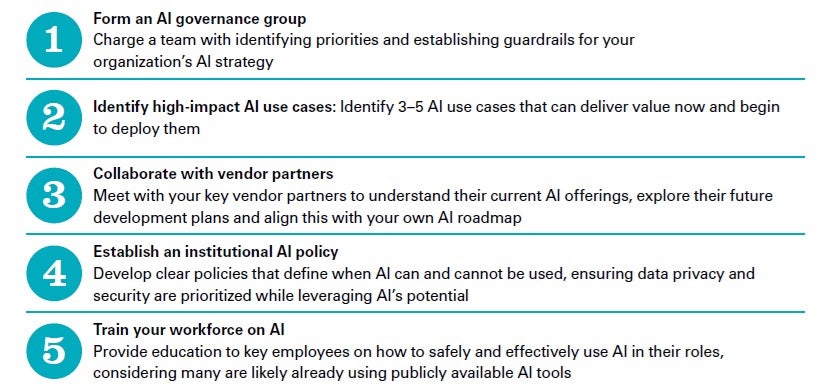Navigating AI Strategy and Adoption A Guide for Health Systems
Below is an excerpt from a recent paper, Navigating AI Strategy and Adoption: A Guide for Health Systems. Through January 2025, Manatt is releasing a series of articles offering a deep dive into how AI is impacting heath systems. Topics include: access to specialty care, AI in the safety net, implementing AI using a persona-driven approach, AI in the academic research environment.
The U.S. health care system is at a tipping point. In a recent study that compared health system performance across ten high-income countries based on access to care, care delivery process, administrative efficiency, equity and health outcomes, the U.S. ranked last.1 Despite incredible advances in science and medicine, life expectancy across the U.S. has been stagnant or declining while health care costs continue to increase unabated. Despite year-over-year increases in national health expenditure, most health systems continue to operate on low single-digit operating margins and face significant financial pressures from rising labor costs, stagnant reimbursement, and rate pressures, as well as new market entrants.
Health systems view artificial intelligence (AI) as a potential technological breakthrough to crack the iron triangle of access, quality and cost. Ambient documentation appears to be health AI’s first gamechanging app—delivering a magical experience for physicians while reducing pajama time and risk of burnout.2
With a clear understanding of health AI use cases and the framework provided by the maturity model, health system leaders are now positioned to take practical steps toward AI adoption. For organizations in the early stages of AI implementation that are looking to build a solid foundation for future AI adoption, the following steps provide a strong starting point:

In the coming weeks, a follow-on Manatt on Health newsletter series will offer deep dives into specific health AI topic areas. These newsletters will be available on Manatt’s AI landing page.
